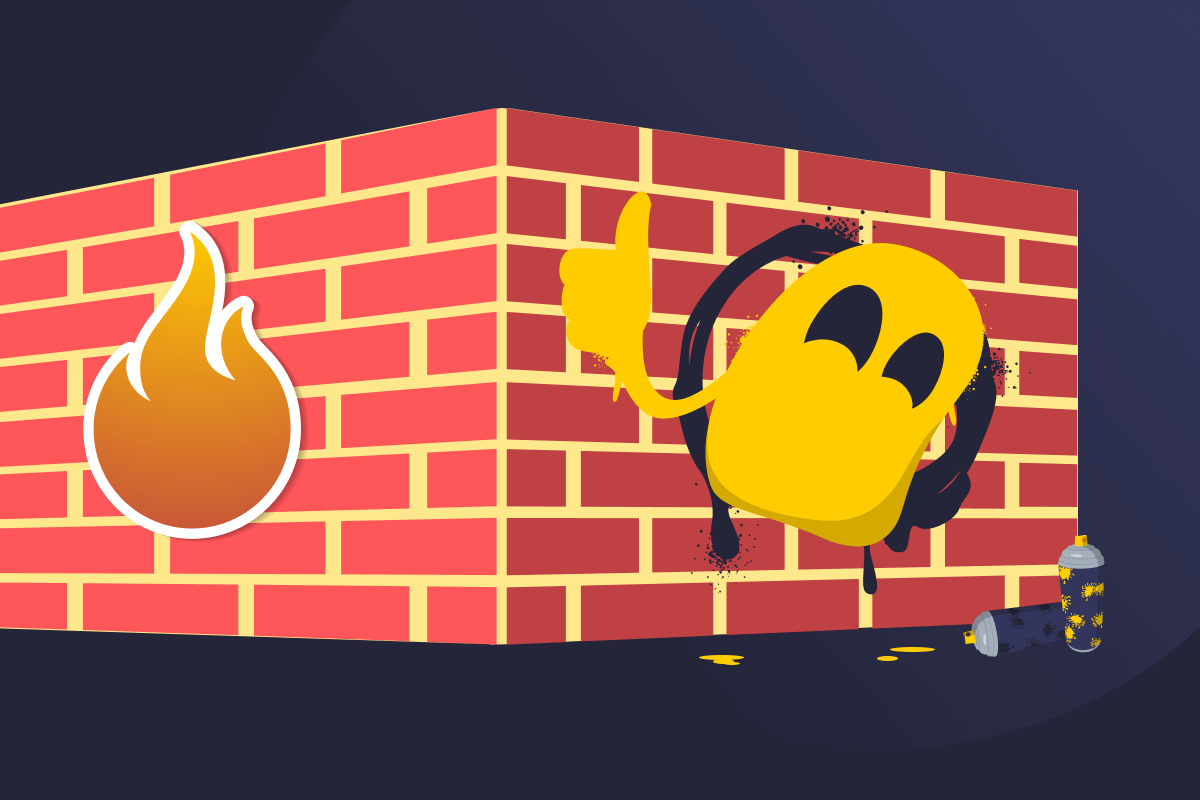VPN Firewall

VPN Firewall Definition
A VPN firewall uses firewall rules to protect and control your traffic over a VPN connection. While a VPN hides your IP address and encrypts your data, a firewall monitors and filters incoming and outgoing traffic based on security rules you set. Combined, they ensure only authorized traffic moves through your VPN connection.
VPN firewalls are mostly a part of business networks or system security setups, where they allow only VPN traffic to reach the VPN server or filter requests coming from VPN connections before they reach the rest of the network.
You usually don’t need to use a VPN firewall for personal use. Most VPNs already include built-in security features, like a kill switch, DNS leak protection, and ad blockers, which filter your traffic and protect your privacy while you browse, stream, or download.
How Does a VPN Firewall Work?
A VPN firewall usually monitors the flow of traffic between your device and the internet to check whether it’s moving through the VPN tunnel. If it’s not, the firewall blocks it, helping to prevent unsecured traffic from slipping through the connection.
You can place the firewall itself in different parts of the network, depending on how you want to control traffic. When you place it after the VPN server, traffic goes through the VPN first before it hits the firewall, which makes sure only VPN-related traffic goes through to the internal network. You can also put it in front of the VPN server to check incoming traffic before it reaches the VPN. This can stop malware or suspicious connections from getting into your private network.
You can configure the VPN firewall to lock down internet access entirely unless the VPN is active. So, if the connection drops or fails, your device loses access to the internet completely until the VPN connection is restored, much like the kill switch provided by most secure personal VPNs.
What Does a VPN Firewall Do?
Instead of letting all traffic through by default, a VPN firewall lets you decide what’s allowed and what gets blocked. More specifically, a VPN firewall:
- Filters non-VPN traffic: The VPN firewall blocks any traffic that isn’t using the VPN (when you configure it properly). If the VPN connection drops, it can also cut your traffic to stop your data from leaking.
- Stops malicious content: The firewall checks traffic before it reaches your device, filtering out requests from known malicious sources before they can harm your system. However, a VPN firewall doesn’t scan or remove malware that’s already on a device.
- Enforces network access rules: A firewall lets you decide what apps, devices, and services can use your network and blocks unauthorized connections.
Traditional Firewalls vs VPN Firewalls
Traditional firewalls monitor and control incoming and outgoing network traffic based on set security rules. They block anything that looks suspicious or doesn’t follow the rules you’ve set. For example, a firewall can block unknown connections or traffic from risky sources.
A VPN firewall works similarly but with a more specific job. It focuses on your VPN traffic and blocks anything that tries to bypass the VPN tunnel. So, instead of watching all traffic, it makes sure everything goes through the VPN before it reaches your device or the internet.
Read More
- VPN vs Firewall: What’s the Difference, and Should You Use Both?
- How to Stay Safe and Secure Behind a Firewall
- What Is a Personal Firewall?
FAQ
You can, but you probably don’t need to. If you’re using a personal VPN for things like streaming or browsing on public Wi-Fi, the built-in features already give you strong protection. Setting up a firewall like this is more common in advanced setups or business networks.
It can help, but it’s not a full solution. A VPN firewall can block traffic that looks suspicious or comes from known dangerous sources. That said, it’s not a full substitute for an antivirus, since it doesn’t scan files or detect threats already on your device.
Yes, most VPN firewalls let you set your own rules to decide what traffic, apps, or websites can pass through. You can also choose where to place the firewall, depending on the control you want. Putting it before the VPN server blocks all traffic that isn’t already using the VPN. Placing it after the VPN server filters what comes through the tunnel before it reaches your device.

 45-Day Money-Back Guarantee
45-Day Money-Back Guarantee